
The current flag of Suriname was introduced on 25th of November in 1975 on the occasion of the country's independence. It features five stripes of green, white, red, white, green in a ratio of 4:2:8:2:4 and a golden five-pointed star in the middle of the red stripe. The colours of the flag appear to be defined in a knowledge base of the country "Kennisbank Sur Vlag Suriname" from November 2020, also as Pantone shades: yellow = pt 116 c, red = pt 186 c and green = pt 356 c. The green stands for the country's fertile soil and the hope for progress, white stands for justice, purity and freedom, red for love and progress. The golden (yellow) star represents the unity of the people, but also stands for sacrifice, altruism and the golden future of the country. The colours red, green and white also represent the country's three main parties during the period of independence. The five points of the star represent the country's different ethnic groups. Suriname was originally a Dutch colony and the flag was the Dutch flag with a coat of arms in the middle until 1966. In 1966 a new flag was introduced. It was solid white with a white, black, brown, yellow and red star each, connected by an oval black line. These five stars represented the country's different ethnic groups.
Source:
Die Welt der Flaggen,
Flaggen Wappen Hymnen,
Volker Preuß

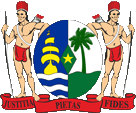
since 1959,
Coat of arms of Suriname,
Source: Corel Draw 4

The basic form of the coat of arms of Suriname dates back to the 17th century, namely the coat of arms of the Suriname Company, which combined the heraldry of Amsterdam and the Dutch West India Company, flanked on the left and right by two native Indians as shield holders. However, it has been changed several times. It was introduced in its current form on 15th of December in 1959. It shows a ship, a palm tree and a green rhombus with a yellow star in the middle. These symbols represent trade, agriculture and mining. The shield holders of the coat of arms are reminiscent of the indigenous people of Suriname. Below, on a red ribbon, the country's Latin motto: "Justitia, Pietas, Fides" → "Justice, Piety, Faith".
Source:
Die Welt der Flaggen,
Flaggen Wappen Hymnen,
Wikipedia (NL), Volker Preuß

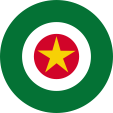
Aircraft Roundel,
Source, by: Wikipedia (EN)

Location:

Source: CIA World Factbook
Map of the country:
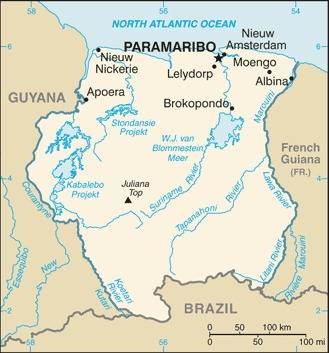
Source: CIA World Factbook

Area: 16363.251 square miles
Inhabitants: 613.000 (2021), thereof 21,7 % Marrons (descendants of escaped slaves), 15,7 % Creoles, 27,4 % Hindustans (Indians), 13,7 % Javanese, 13,4 % Mixed, 7,6 % Chinese, Arabs, Europeans and native Indians
Religions: 48,4 % Christian, 22,3 % Hindu, 13,9 % Muslim
Density of Population: 10 inh./sq.mi.
Capital: Paramaribo, 240.924 inh. (2012)
official Language: Dutch
other Languages: Dutch Creole, Hindustani, Javanese, English
Currency: 1 Suriname Dollar (SRD, Sur$) = 100 Cents
Time Zone: GMT – 3 h
Source:
Wikipedia (D)

1499 · the Spanish seafarer Christoph Columbus discovers the coast of the today’s Surinam, formal appropriation by Spain
1598 · colonization and settlement by Dutch
17th century · colonization and settlement by Englishmen
1667 · Peace of Breda, in exchange for the colony of New Netherlands (New Amsterdam, New York), the Dutch West India Company receives Suriname and British Guiana from England
1799 · United Kingdom occupies Suriname
1683 · the Dutch operations in Suriname are transferred to the Sociëteit van Suriname (Suriname Company)
1795 · dissolution of the Suriname company
1802 · Peace of Amiens, United Kingdom cedes Suriname to the Netherlands
1804 · United Kingdom occupies Suriname
1814 · United Kingdom gives Suriname back to the Netherlands
1863 · Abolition of slavery, economic decline
1941–1945 · Second World War, the USA occupy Suriname
29th of December 1954 · new constitution, Suriname becomes an autonomous overseas departement of the Netherlands
25th of November 1975 · the Netherlands grant Suriname the independence
1980 · military coup d’état
1982 · attempted coup d’état
1986–1992 · civil war
1987 · free elections
1990 · military coup d’état
1991 · free elections
2000 · border disputes with Guyana on the coast
2007 · the border dispute with Guyana is resolved in court
Source:
Wikipedia (DE),
Volker Preuß

The origin of the name of the country is unknown. Probably it has its roots in the name of an Indian tribe called "Surine" which was banished by the Arawak tribe. Earlier was even in use the name Dutch-Guyana. "Guyana" means "Country of the many waters" in the language of the Aarawak indians.
Source: Wikipedia (EN)


![]()




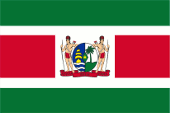
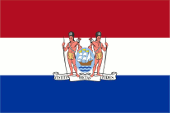
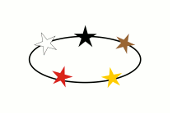
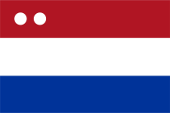
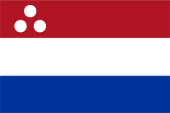
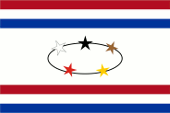




![]()
